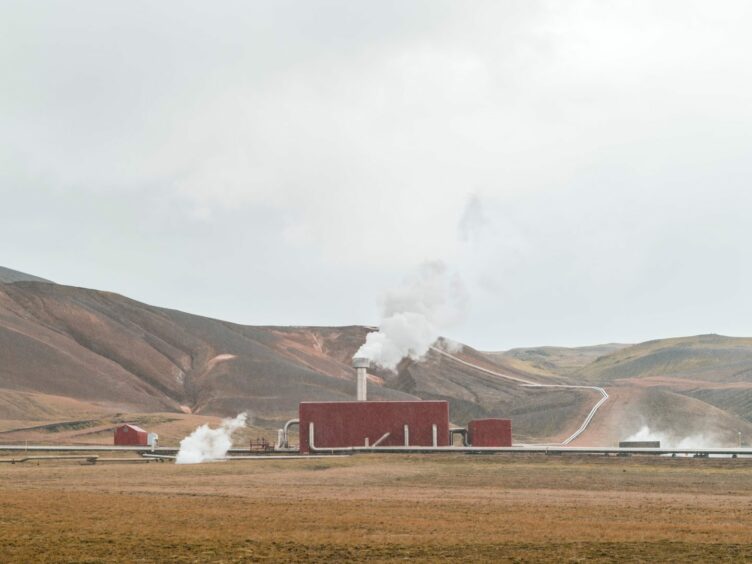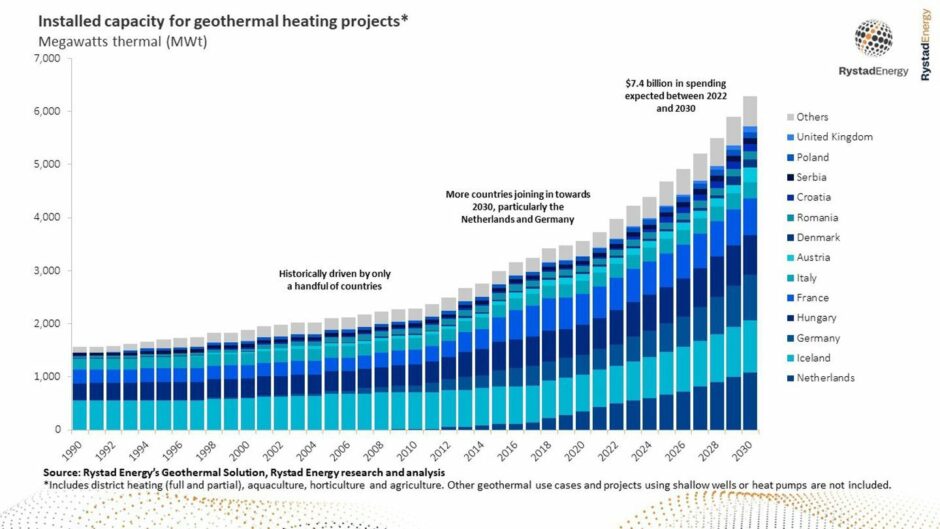
Recent Rystad research shows the UK government is expected to spend more than $470 million on geothermal heating by the decade’s end.
The UK has traditionally ignored geothermal as a handful of European nations took advantage of the energy source for heating with 20 megawatt thermal (MWt) of geothermal heating capacity today, however, that is expected to exceed 100 MWt in 2030.
The uptake in geothermal heating is a trend across Europe as countries aim to find affordable alternatives to gas-fired heating.
Geothermal usage is set to increase by 58% growing from today’s 3.9 gigawatt thermal (GWt) to over 6.2 GWt – this increase in development is expected to cost $7.4 billion.
This analysis includes district heating (full or partial), aquaculture, horticulture and agriculture, however, projects using shallow wells or heat pumps are not included.
Senior analyst at Rystad Energy, Daniel Holmedal, said: “Geothermal is a virtually unlimited source of consistent energy that could play a crucial role in addressing energy security and affordability in the decades to come.
“As European countries move to decarbonize their power mix and chase secure sources of heating for the winter months in light of geopolitical tensions, investments in geothermal projects will skyrocket.”
Hurdles of Geothermal heating
For local authorities looking to implement geothermal heating in their area, the heating network is generally the most significant cost component for geothermal district heating projects.
Drilling costs are also to be considered, with the average European heating project wells drilled to 2,000 meters.
But some recent ultra-deep projects, including those in the UK and Finland, have surpassed 5,000m.
The success of drilling is also variable and subject to location. For example, success rates in Germany and Hungary often exceed 90%, but rates in the Netherlands sink as low as 70%.
The levelised cost of heating (LCOH) of geothermal projects can vary widely, impacted by the project size, well depths and the ground-level temperature – a colder location puts more stress on the system and will have a lower levelised cost over its lifetime.
The average capacity weighted LCOH for Europe (excluding Iceland) was found to be $39 per megawatt hour. However, costs vary drastically between nations.
In the UK there are already examples of geothermal energy being used. In Cornwall, there is currently a well producing both heat for the local area and electricity.
In order to produce electricity, the plant “produces temperatures above 150 degrees celsius and that’s the sort of temperature that is mainly required for electricity production,” Darren Jones, senior geologist at the British Geological Survey told Energy Voice.
Read more on Jones’ thoughts on geothermal in the UK here.
Recommended for you


 © Supplied by Rystad
© Supplied by Rystad